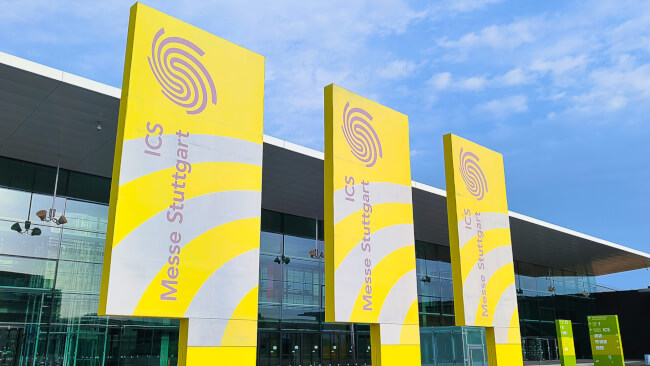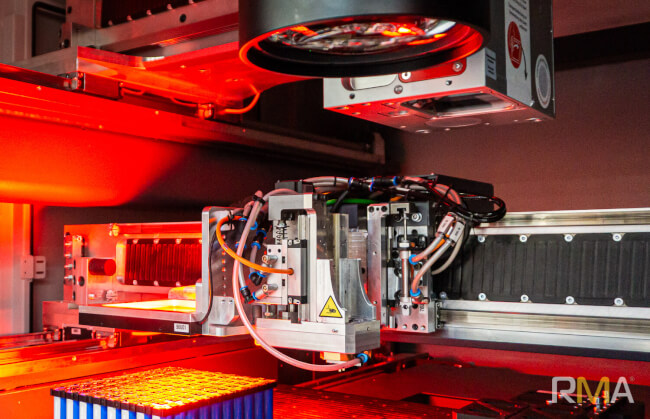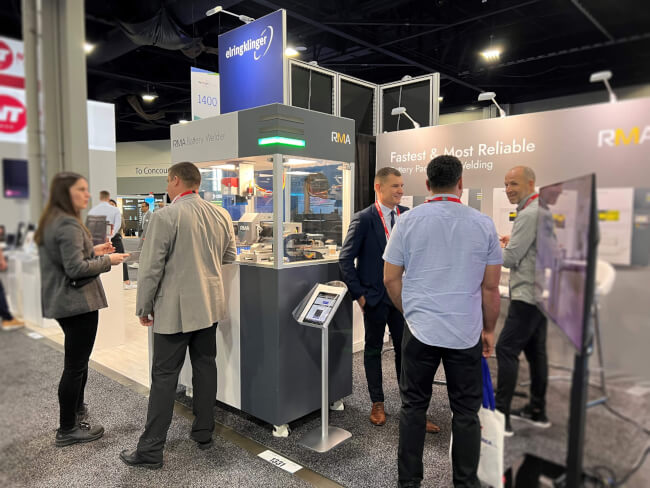
Laser Welding Battery Packs: Key Challenges and Solutions
How does laser welding benefit battery manufacturing, and what challenges does it pose?
Laser welding battery packs offers precision, speed, and reliability, making it a cornerstone of modern battery manufacturing. However, it also presents challenges that manufacturers need to overcome to ensure efficient production and long-lasting performance. At RMA, we specialize in addressing these challenges with cutting-edge laser welding solutions.
Key Challenges in Laser Welding Battery Packs
- What role does material variability play in laser welding battery packs?
Battery packs are made from a mix of materials, such as metals, alloys, and coatings. This variability can affect how laser energy is absorbed, leading to inconsistent welds. Optimizing laser parameters and carefully selecting materials are essential steps to mitigate this issue.
- How does heat management impact laser welding for batteries?
The intense heat generated during laser welding can damage sensitive battery components, including electrolytes and thermal management systems. Effective heat dissipation and precision control are crucial to maintaining battery integrity and longevity.
- What are the challenges of welding dissimilar materials in battery packs?
Battery manufacturing often involves joining materials with different melting points and thermal conductivities. Achieving a strong, defect-free bond requires advanced techniques, such as tailored laser settings and specialized filler materials.
- Why is joint design complexity a hurdle in laser welding?
Battery components, like tabs and foils, often feature intricate designs. Consistent welds in these areas demand precise beam control and advanced positioning systems.
- How do reflective surfaces affect laser welding?
Materials with reflective surfaces, such as certain coatings and foils, can reduce laser energy absorption. Surface preparation, including cleaning and pre-treatment, is vital for achieving efficient welds.
- What makes welding thin materials challenging?
Thin battery components are prone to defects such as burn-through during welding. Fine-tuning parameters like beam focus and energy density is crucial to prevent damage while ensuring strong bonds.
- Why is in-process monitoring essential for quality control?
Real-time monitoring helps ensure the reliability of laser-welded joints. However, implementing monitoring systems, such as sensors or cameras, can be challenging in fast-paced production environments.
- How does contamination impact laser welding?
Although laser welding is a contactless process, contamination from dust or particles can compromise weld quality. Maintaining a clean production environment is crucial for avoiding impurities.
- What are the maintenance and durability considerations for laser welding systems?
The high-intensity nature of laser welding can lead to equipment wear and tear. Regular maintenance and robust system designs are essential for minimizing downtime and ensuring consistent performance.
- How does scalability and cost affect laser welding in battery manufacturing?
While laser welding is highly efficient, the initial investment in equipment can be significant. However, as production scales up, the per-unit cost decreases, making it a cost-effective solution for large-scale operations.
- How can manufacturers ensure regulatory compliance?
Meeting safety and environmental standards is critical in battery manufacturing, especially when working with high-powered lasers. Ensuring compliance with relevant regulations helps manufacturers avoid penalties and maintain safe operations.
Conclusion: Overcoming Challenges in Laser Welding Battery Packs
Overcoming the challenges of laser welding battery packs requires advanced technology, industry expertise, and collaboration. At RMA, we leverage years of experience to provide innovative solutions that enhance the efficiency and reliability of laser welding processes.
Looking for expert guidance on laser welding battery packs? Contact us at sales@myrma.eu or visit our Contact Page to learn how we can support your production goals with cutting-edge laser welding solutions.



